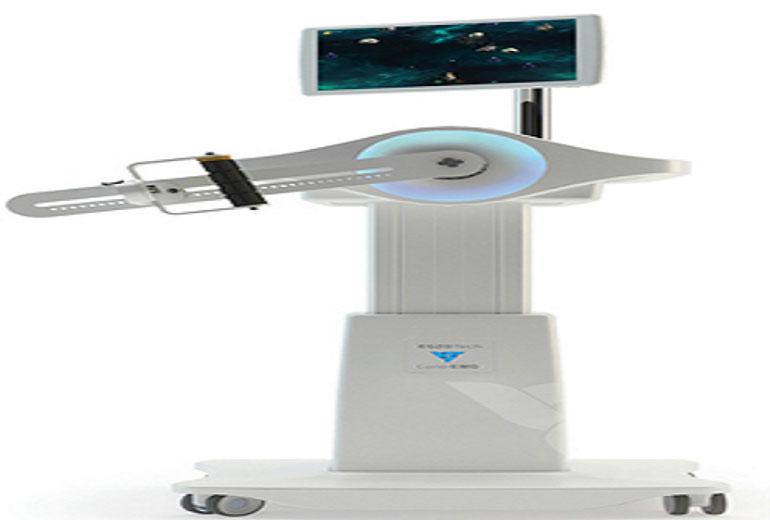
The robot is equipped with electromyography (EMG) technology – a diagnostic tool that’s used to gauge the state of muscles and the nerves cells around them. When these motor neuron cells send electrical signals to the muscles, the EMG electrodes detect them and determine the strength and overall health of the muscles. It can diagnose nerve or muscle malfunction and any “communication” problems between nerves and muscles.
Using electromyography (EMG), Luna is able to detect damage and electrical currents in muscle that human therapists could otherwise miss. From that, it’s then able to customize a more precise and appropriate physical therapy plan.
EgzoTech’s owner, Michal Mikulski, who’s also an engineer, explains, “We reach a certain stage of disease development… when muscle tension isn’t even visible. But these signals can still be seen on our machines, and Luna is still able to detect them. So when the brain sends a signal to the muscle to flex, even though we don’t see it, Luna is still able to detect it. It detects these signals and causes the movement of the limb, as if it were performed naturally.”
The creation of Luna EMG, the first ever robot adapted to work with people suffering from neuromuscular diseases was possible owing to a very close cooperation between the creators: the EGZOTech company and Husarska Design Studio. Our team was responsible for the robot’s ergonomics and appearance.
The robot is intended for a specific target group: patients and rehabilitators. That is why the design team began the works with interviewing these two groups. The planning of the robot’s functionality was based on learning their needs and expectations.
In order to ensure the desired ergonomics, the designers have paid many visits to physiotherapists at their workplace. Hence, using Luna EMG for everyday duties is not at all problematic.
At the same time, the EGZOTech team of engineers was perfecting the applications enabling a patient to play computer games when going through rehabilitation. It is an innovation on a global scale.